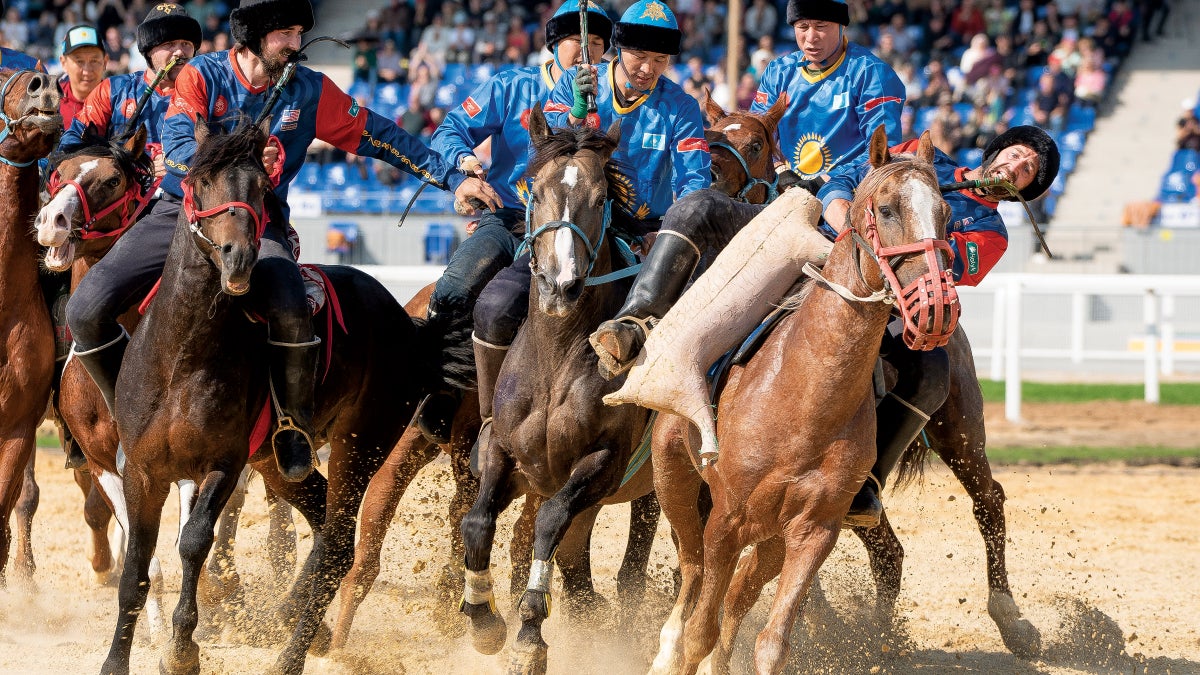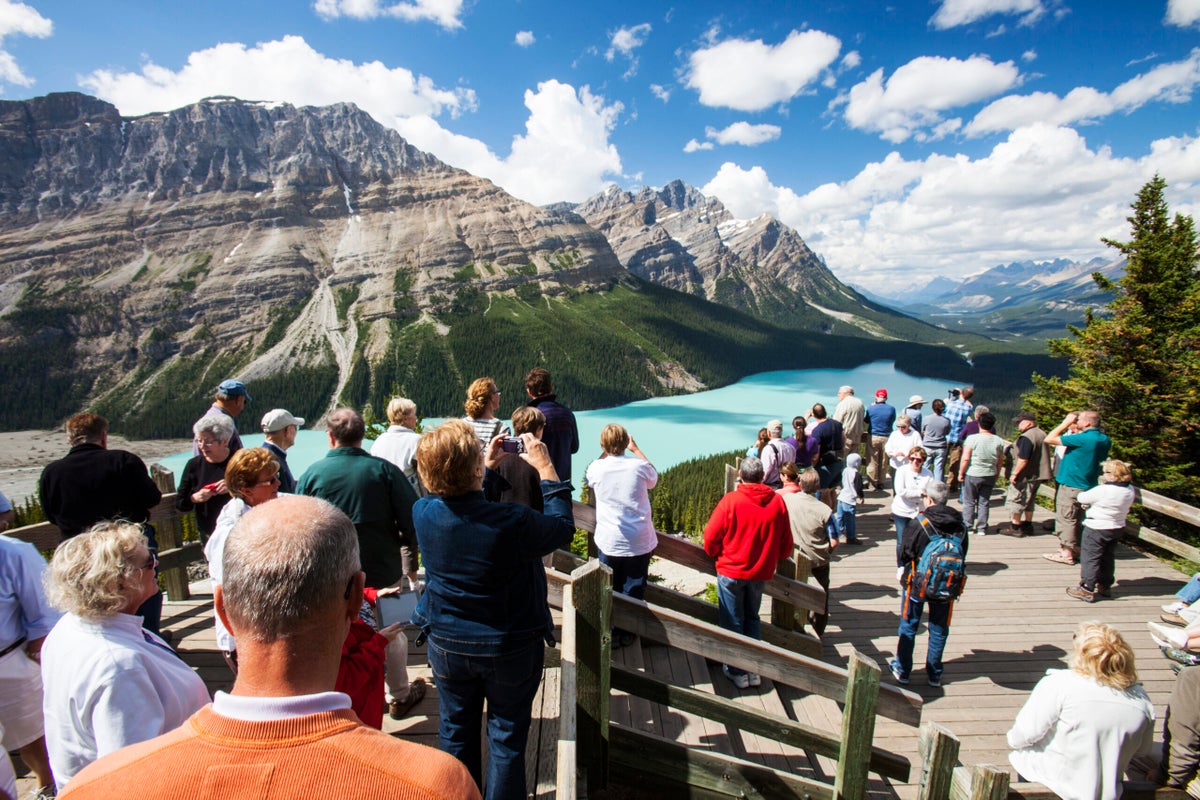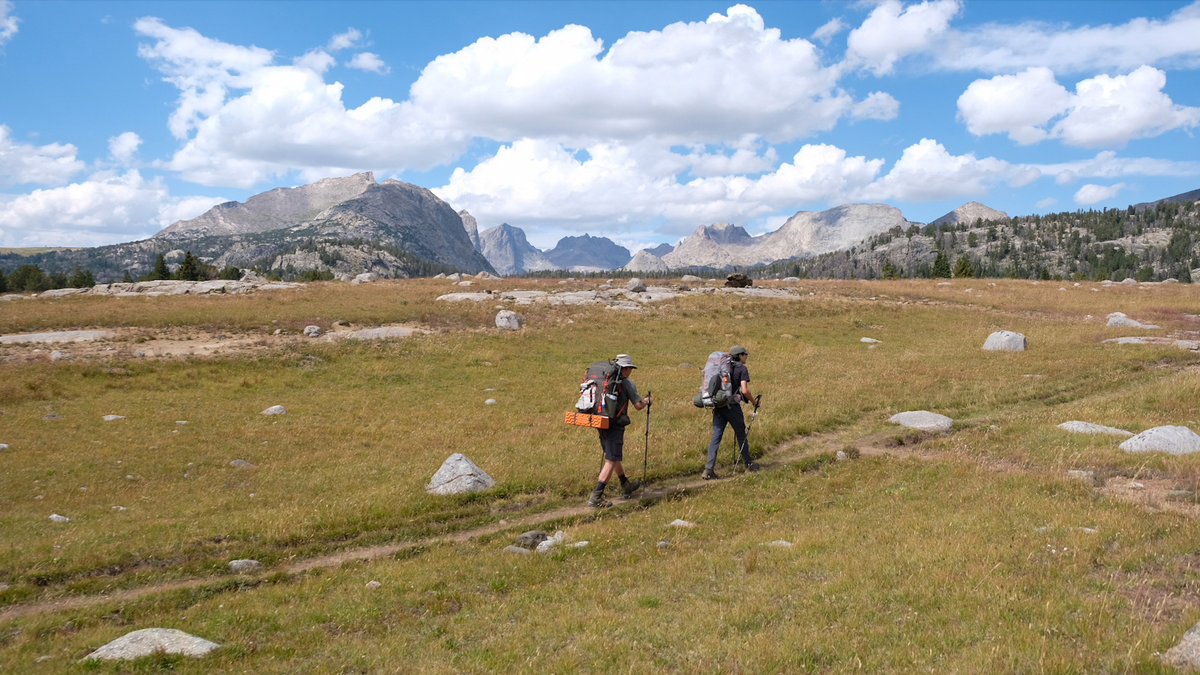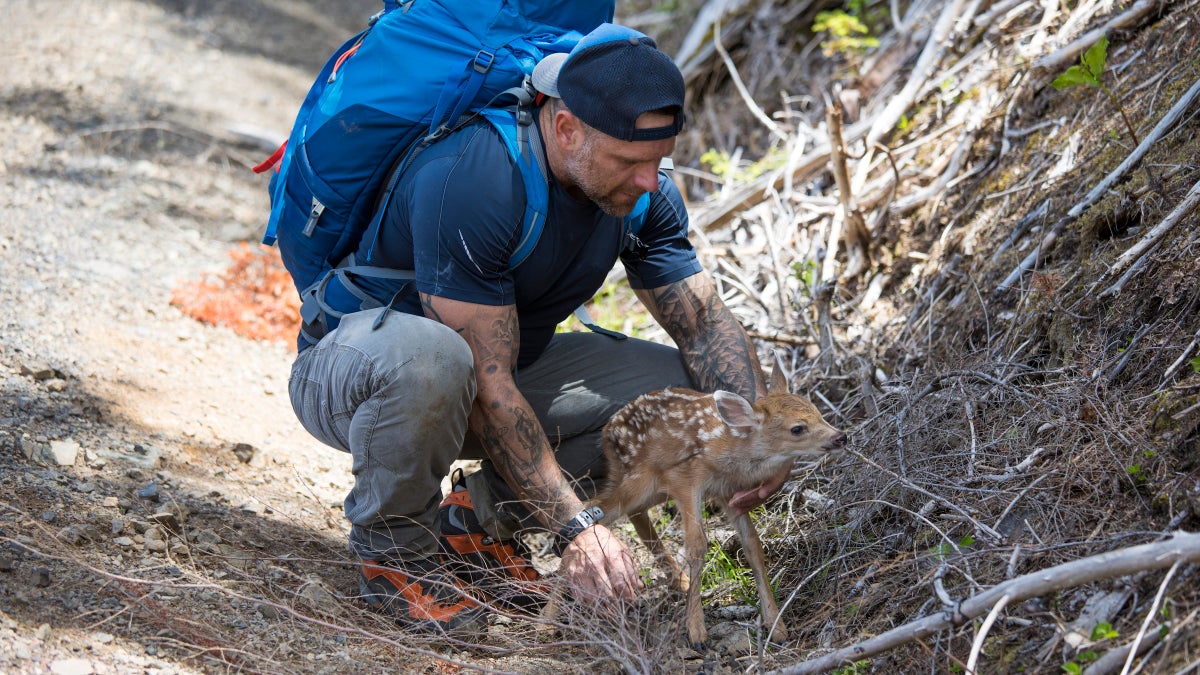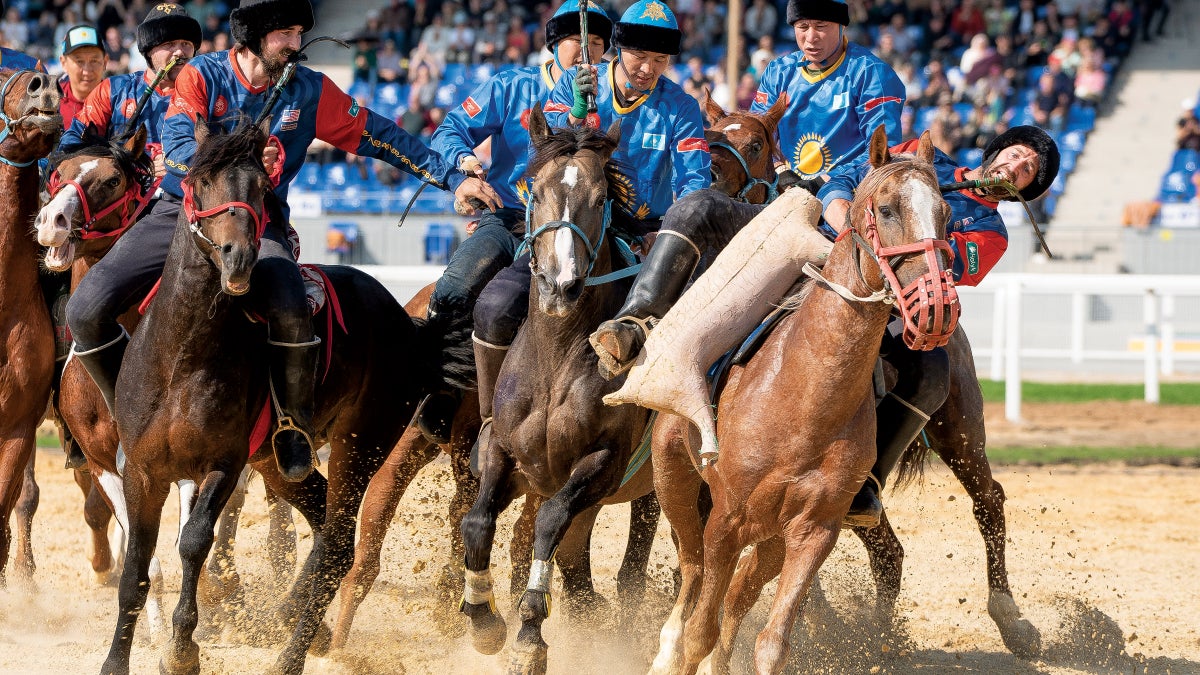
Twenty-four hours in Kazakhstan was enough for the youngest member of the United States kok boru team to land himself with one foot in the grave and the other hung up on his saddle. Wyatt Mortenson, twenty-three years old, had never been to Central Asia, had never played kok boru, had been horseback for all of twenty minutes before he wound up suspended upside down by his boot, unable to either regain his seat or uncouple himself from the Kazakh stallion that was half a second from rag-dolling him around the arena.
It was the team’s first and only practice at the World Nomad Games in Astana, Kazakhstan’s capital. About 3,000 athletes from eighty-nine countries had gathered to compete in twenty-one events: falconry and eagling, archery (both on foot and horseback), martial arts of many sorts, tug of war, horse racing, a strength event called “powerful nomad,” and the game we would be playing, kok boru. The object of the game is to pick up a headless goat—or, in the case of these Games, a seventy-pound chunk of rubber shaped like a goat—and throw it into the other team’s goal, a plastic basin about the size of a hot tub.
Wyatt leaned down from his horse and grabbed the rubber goat by a leg. As he was hauling it upward, the horse stepped on it—a common enough occurrence in the game. The sudden reversal of force cantilevered him straight toward the ground—but the saddle’s steel handle slid inside his tall leather boot as he was falling. His horse was about to bolt for the horizon when Wyatt managed to reach up and grab the nearside rein, turning the horse in a tight circle until a Kazakh referee, who had been watching the U.S. team practice, sprang from his horse and freed Wyatt’s boot.
Our first practice was a big deal for two reasons. One, the team needed to feel out the horses, a loaner squad of Kazakh animals trained for the game. Two, we needed to ensure that the Kazakh saddles we’d been given were in working order. Kok boru players use a doubled-up rigging of two-inch-wide trucker straps to handle the rotational torque of lifting the goat; watching one of these guys saddle his horse before a game gave new meaning to a tight girth. And a third reason was to burn off the pre-game jitters accumulated over months of preparation. In kok boru, adrenaline is not your friend.
The team took the practice field at the hippodrome—the Games’ horse facility, with a central field surrounded by a racetrack and grandstand—and everything seemed in good enough shape. The horses were lively. Then Nick Willert’s horse started to balk, as though disinclined to engage in the scrum. When Nick encouraged him forward, the horse kicked out both back legs like a mule. Nick asked again and the horse jumped backward, spun to the right, and kicked Wyatt in the elbow—not a fun place to be kicked by a horse.
I was standing on the sidelines. Nick looked at me. “What the fuck is wrong with this horse?” he asked.
Gathered on the practice field were a dozen old Kazakh men and one middle-aged coach of the Chinese team, some of them on horseback. Eager to watch the cowboys from America go at it, the old men encouraged a scrimmage. The team should have declined, should have been more deliberate about its approach to the horses, the scrumming together, the picking up of the dummy goat, but instead the guys flew into action like true American cowboys: headlong and about to get hurt.
While no one on the team is a working cowboy, all are cowboy enough to think that kok boru is a good idea.
First came Wyatt’s hang-up. Then Brendan Bryant, who’s been making trips to Central Asia to play kok boru since 2016, was knocked from his horse, got his foot caught in the stirrup, and was dragged by his left leg until his own horse kicked him inside the knee. The kick dislodged Brendan’s foot and jerked his boot off, so that he lay writhing in the dirt with a white stocking foot for all to see. After a half hour of this kind of absurdity, Mike Sabo, the oldest member of the team at fifty-three, was pulling the goat aboard when the tendon in his right bicep ruptured with an audible pop.
“That was the gnarliest sound I’ve ever heard,” Nick said.
I’d heard it before. I’d been on the team roster myself until two weeks prior, when I ruptured my own bicep tendon while training. So I’d come to Kazakhstan with my right arm in a sling, acting as the team manager.
That was enough for one day. We were down a man—Mike’s bicep was already curling like a snail at the top of his arm—and Brendan could hardly walk. Our first practice had been a disaster, and the first game would be against the Kazakh national team, the home team, on its home turf in front of its own fans, at a venue that was very much a spectacle of Kazakh nationalism.
Ladd Howell, our star player and cocaptain, walked over to me leading his horse. His face was glazed with sweat, and his horse was breathing heavily.
“Some of these horses act like they don’t have a clue what’s going on out there,” he said. He leaned over, put his hands on his knees, and spit in the dirt. “You forget how dangerous this game is until you play it again. This was an eye-opener.”
The post In Kok Boru, Athletes Battle Over a Headless Goat—On Horseback appeared first on Outside Online.











